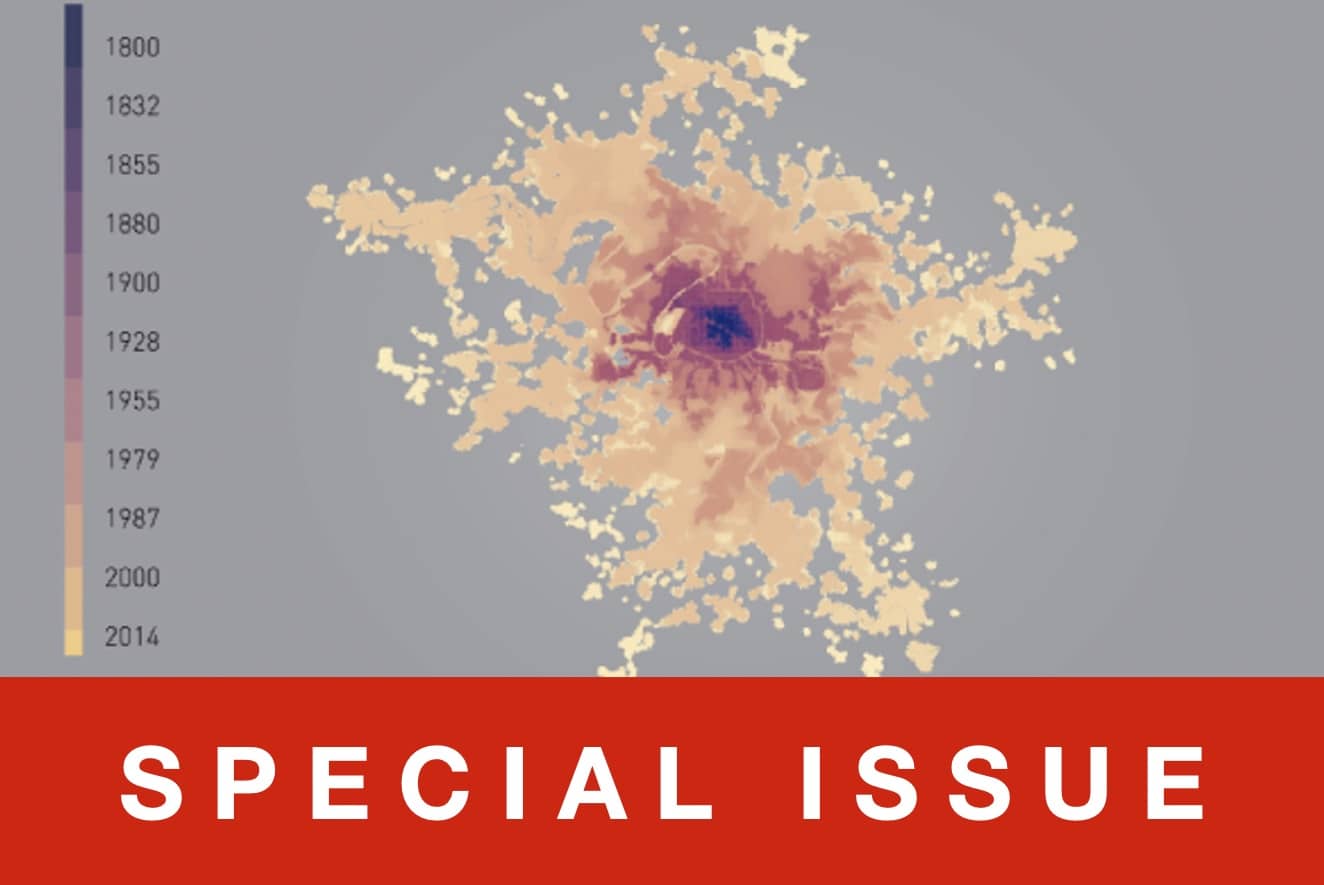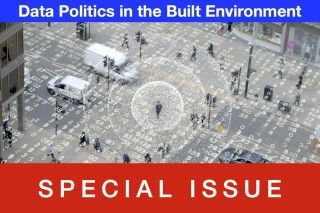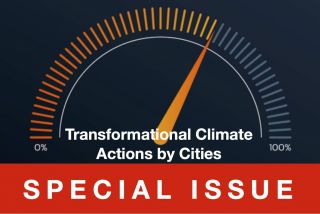
www.buildingsandcities.org/journal-content/special-issues/urban-expansion2.html
Urban Expansion

This special issue examines how cities in the Global South can predict & manage their expansion in effective, sustainable ways.
Urban population growth, now largely confined to the Global South, requires cities to implement effective strategies to accommodate many more people and to ensure that they live productive, healthy, and satisfying lives. The limited potential of infill and densification inevitably requires the conversion of very large areas in the surrounding countryside to urban use. This special issue considers how this can be done in an orderly, efficient, and inclusive manner, with conservation and climate change in mind.
Guest Editor: Shlomo (Solly) Angel
Making room for accommodating growth in cities is a two-pronged strategy: facilitating and promoting densification while, at the same time, preparing lands at scale for sustainable urban expansion in their periphery. Urban expansion in geographic space is often ill-defined and its measurement and projection into the future are controversial. 'Sprawl' is detrimental to the surrounding countryside, costly in terms of infrastructure, excessive waste in energy and resources, and increased GHG emissions. But the regulatory containment of urban expansion is problematic as it can result in land and house price inflation, making cities less affordable. When regulation or enforcement are weak, expansion occurs in a detrimental manner.
There is a window of opportunity currently that allows cities in the Global South to guide and shape their form-making them more productive, more inclusive, and sustainable while they are growing. Preparing for urban expansion with climate change in mind can ensure that expansion is not car-centric and that expansion areas are planned with broader Sustainable Development Goals (SDGs) in mind.
This special issue explores:
- whether and where preparing for urban expansion is appropriate
- how urban expansion can be undertaken more sustainably
- how and where expansion needs to be contained
- what are the appropriate strategies for balancing densification and expansion
- how the appropriate expansion strategies can be effectively implemented.
Lessons and guidance are provided for improved anticipation and planning for urban expansion. A sensible strategy is to prepare lands for expansion, and to prepare them with climate change in mind. As this special issue makes clear, this involves planning for expansion by focusing on simple strategic measures that local authorities can undertake (e.g. arterial roads, removing obstacles to transit-oriented densification along these arterial roads, facilitating land subdivision with small blocks, an adequate amount of land in streets in both formal and informal neighborhoods, protecting areas of high environmental risks as well as ecological assets from development, and ensuring the creation of a hierarchy of green public open spaces).
Urban expansion should not be perceived as an unpleasant burden to be avoided, resisted, or ignored. Instead, it is an opportunity and a challenge, with multiple benefits to be realized in coming decades if done correctly.
Table of Contents
Urban expansion: theory, evidence and practice
Shlomo Angel
Complexifying urban expansion: an exploratory,
gradient-based approach
Steven M. Richter, R. Patrick
Bixler
Urban growth in peri-urban, rural and urban areas: Mexico
City
Gustavo Manuel Cruz-Bello, José
Mauricio Galeana-Pizaña, Salomón González-Arellano
Urban encroachment in ecologically sensitive areas: drivers,
impediments and consequences
Manja Hoppe Andreasen, Jytte
Agergaard, Richard Yao Kofie, Lasse Møller-Jensen, Martin Oteng-Ababio
Socioeconomic and livelihood impacts within Bangkok's expanding metropolitan region
Gregory Gullette, Paporn
Thebpanya, Sayamon Singto
Planning gaps: unexpected urban expansion in five Colombian
metropolitan areas
Maria Monica Salazar Tamayo,
Johann Dilak Julio Estrada
Implications of urban expansion: land, planning and housing
in Lagos
Basirat Oyalowo
The urban expansion of Berlin, 1862-1900: Hobrecht's Plan
Felix Bentlin
The Ethiopia Urban Expansion Initiative and knowledge
exchange
Patrick Lamson-Hall, Richard
Martin
Latest Peer-Reviewed Journal Content
Acceptability of sufficiency consumption policies by Finnish households
E Nuorivaara & S Ahvenharju
Key factors for revitalising heritage buildings through adaptive reuse
É Savoie, J P Sapinski & A-M Laroche
Cooler streets for a cycleable city: assessing policy alignment
C Tang & J Bush
Understanding the embodied carbon credentials of modern methods of construction
R O'Hegarty, A McCarthy, J O'Hagan, T Thanapornpakornsin, S Raffoul & O Kinnane
The changing typology of urban apartment buildings in Aurinkolahti
S Meriläinen & A Tervo
Embodied climate impacts in urban development: a neighbourhood case study
S Sjökvist, N Francart, M Balouktsi & H Birgisdottir
Environmental effects of urban wind energy harvesting: a review
I Tsionas, M laguno-Munitxa & A Stephan
Office environment and employee differences by company health management certification
S Arata, M Sugiuchi, T Ikaga, Y Shiraishi, T Hayashi, S Ando & S Kawakubo
Spatiotemporal evaluation of embodied carbon in urban residential development
I Talvitie, A Amiri & S Junnila
Energy sufficiency in buildings and cities: current research, future directions [editorial]
M Sahakian, T Fawcett & S Darby
Sufficiency, consumption patterns and limits: a survey of French households
J Bouillet & C Grandclément
Health inequalities and indoor environments: research challenges and priorities [editorial]
M Ucci & A Mavrogianni
Operationalising energy sufficiency for low-carbon built environments in urbanising India
A B Lall & G Sethi
Promoting practices of sufficiency: reprogramming resource-intensive material arrangements
T H Christensen, L K Aagaard, A K Juvik, C Samson & K Gram-Hanssen
Culture change in the UK construction industry: an anthropological perspective
I Tellam
Are people willing to share living space? Household preferences in Finland
E Ruokamo, E Kylkilahti, M Lettenmeier & A Toppinen
Towards urban LCA: examining densification alternatives for a residential neighbourhood
M Moisio, E Salmio, T Kaasalainen, S Huuhka, A Räsänen, J Lahdensivu, M Leppänen & P Kuula
A population-level framework to estimate unequal exposure to indoor heat and air pollution
R Cole, C H Simpson, L Ferguson, P Symonds, J Taylor, C Heaviside, P Murage, H L Macintyre, S Hajat, A Mavrogianni & M Davies
Finnish glazed balconies: residents' experience, wellbeing and use
L Jegard, R Castaño-Rosa, S Kilpeläinen & S Pelsmakers
Modelling Nigerian residential dwellings: bottom-up approach and scenario analysis
C C Nwagwu, S Akin & E G Hertwich
Mapping municipal land policies: applications of flexible zoning for densification
V Götze, J-D Gerber & M Jehling
Energy sufficiency and recognition justice: a study of household consumption
A Guilbert
Linking housing, socio-demographic, environmental and mental health data at scale
P Symonds, C H Simpson, G Petrou, L Ferguson, A Mavrogianni & M Davies
Measuring health inequities due to housing characteristics
K Govertsen & M Kane
Provide or prevent? Exploring sufficiency imaginaries within Danish systems of provision
L K Aagaard & T H Christensen
Imagining sufficiency through collective changes as satisfiers
O Moynat & M Sahakian
US urban land-use reform: a strategy for energy sufficiency
Z M Subin, J Lombardi, R Muralidharan, J Korn, J Malik, T Pullen, M Wei & T Hong
Mapping supply chains for energy retrofit
F Wade & Y Han
Operationalising building-related energy sufficiency measures in SMEs
I Fouiteh, J D Cabrera Santelices, A Susini & M K Patel
Promoting neighbourhood sharing: infrastructures of convenience and community
A Huber, H Heinrichs & M Jaeger-Erben
New insights into thermal comfort sufficiency in dwellings
G van Moeseke, D de Grave, A Anciaux, J Sobczak & G Wallenborn
'Rightsize': a housing design game for spatial and energy sufficiency
P Graham, P Nourian, E Warwick & M Gath-Morad
Implementing housing policies for a sufficient lifestyle
M Bagheri, L Roth, L Siebke, C Rohde & H-J Linke
The jobs of climate adaptation
T Denham, L Rickards & O Ajulo
Structural barriers to sufficiency: the contribution of research on elites
M Koch, K Emilsson, J Lee & H Johansson
Disrupting the imaginaries of urban action to deliver just adaptation [editorial]
V Castán-Broto, M Olazabal & G Ziervogel
Nature for resilience reconfigured: global- to-local translation of frames in Africa
K Rochell, H Bulkeley & H Runhaar
How hegemonic discourses of sustainability influence urban climate action
V Castán Broto, L Westman & P Huang
Fabric first: is it still the right approach?
N Eyre, T Fawcett, M Topouzi, G Killip, T Oreszczyn, K Jenkinson & J Rosenow
Social value of the built environment [editorial]
F Samuel & K Watson
Understanding demolition [editorial]
S Huuhka
Data politics in the built environment [editorial]
A Karvonen & T Hargreaves



Latest Commentaries
Decolonising Cities: The Role of Street Naming
During colonialisation, street names were drawn from historical and societal contexts of the colonisers. Street nomenclature deployed by colonial administrators has a role in legitimising historical narratives and decentring local languages, cultures and heritage. Buyana Kareem examines street renaming as an important element of decolonisation.
Integrating Nature into Cities
Increasing vegetation and green and blue spaces in cities can support both climate change mitigation and adaptation goals, while also enhancing biodiversity and ecological health. Maibritt Pedersen Zari (Auckland University of Technology) explains why nature-based solutions (NbS) must be a vital part of urban planning and design.